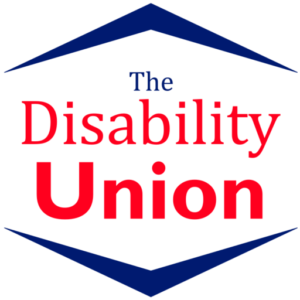
I’m going to go out on a limb here and guess that if you’ve worked a full-time job for any amount of time, you’ve engaged in work-related things outside of your office. Whether it be a business trip to visit clients, a development conference, or just a team-building retreat, these activities usually require you to go somewhere that isn’t your usual workplace. Have you ever stopped to assess whether or not your office events are accessible for everyone? What about your co-worker who uses a wheelchair? Can they get to their table at the marketing lecture?
I know not everyone is going to be planning a big event like this, but it’s still important to discuss. For one, if you are in charge of signing your group up for events, it’s good to know what kinds of things to be aware of so you know what to ask the event organizers. Also, these ideas can be scaled down to something as simple as the office Christmas party, which was the original inspiration for this article.
Venue and Layout
Making sure everyone can get into the venue is step one. If I am invited to a conference and can’t get in the door because there’s a flight of stairs at the entrance, you’ve wasted everyone’s time. I should also be able to access any other activities, the restroom, and be able to view a speaker presentation without feeling like my wheelchair (or other mobility devices) is constantly in the way.
This also applies to seating. I’ve been to several conferences where the layout is a giant ballroom with assigned seating at round tables. It’s important to take into consideration how much room a wheelchair, walker, or scooter needs to get around a set of tables and chairs. When doing so, also take into account chairs that are pushed out with people sitting in them. Preferably, I like to sit at an outside table near the front so I can get around easily. This way, I’m not blocking any aisles if someone needs to get up and move around. In addition, I can see the presenter(s) at the front.
Food
Let’s face it, any kind of gathering of more than five people that lasts more than an hour almost always requires food of some kind. Okay, maybe not requires, but it’s pretty customary. There are two big things to remember when it comes to food. First, it’s important to think of allergies and other dietary restrictions. The best thing to do in this instance is to ask this when people are signing up for the gathering, whatever it may be. This is common practice, and most places (from my experience) tend to be decent at this. The second thing to keep in mind doesn’t so much deal with the food itself as the food delivery system. What do I mean by food delivery system? I’m glad you asked! For both people with strength and/or dexterity issues, having heavy utensils can be difficult. Having plastic silverware available for people who need them is very inclusive. It also shows your attendees who need them that they are welcome there. Additionally, it’s important to have straws available for any beverage you have, even if it’s traditionally not drank with one. Some people need a straw to drink.
Entertainment and Activities
If your gathering has activities, try to make them as accessible as possible. I’m not going to be climbing a rock-wall anytime soon. If I were going to a retreat where the whole group was going to be doing an obstacle course, what parts could I, a wheelchair user, do? I’ve been to too many gatherings (both professional and for fun) where I got there and everyone scrambled to find some way for me to be able to participate. Rarely did I feel like I was contributing in a meaningful way, though. That’s not to say don’t have these kinds of things, but find ways to adapt them.
There is one thing I can remember from when a group did rock climbing. We were paired up and the person climbing on the wall could only move where and when their partner told them to, and it was a race against another team. I got to participate by instructing my partner, and I felt like I was actually doing something and got a lot out of the communication exercise.
Other Things to Consider
There are a multitude of other areas that need to be accessible. For instance, any powerpoints or written media, including the event’s website. If you have an attendee (or attendees) with a hearing impairment, there should be interpreters. If the event is held over several days, is the hotel accessible? The best way to prepare for these things ahead of time is to have a section on the sign-up form (on your already accessible website) that asks what accommodations, if any, the participant(s) might need.
Some people might need the itinerary ahead of time to determine if/when they need accommodations, so having that ready as soon as possible is also a big bonus. The earlier I get a schedule for a conference or retreat, the earlier I can arrange for any kind of PCA help I might need.
These events, big or small, are a great way to get to know people you work with, or people in your industry. Whether it’s a giant conference or just an office Christmas party with 20 people, accessibility is key. Almost all your office’s events can be made accessible, it just takes some creative thinking.


